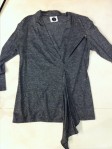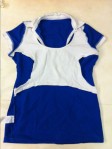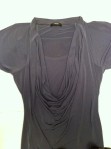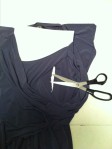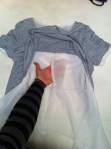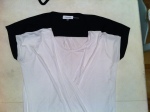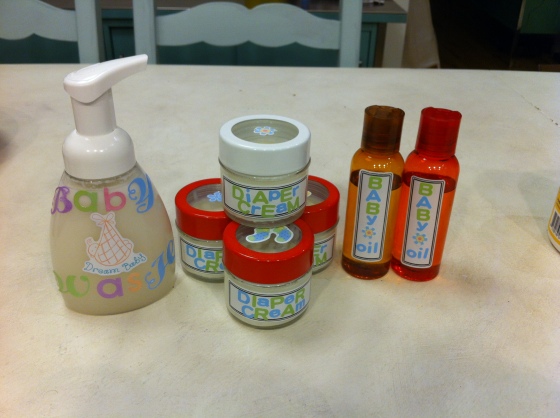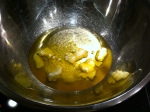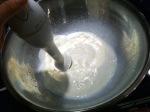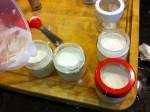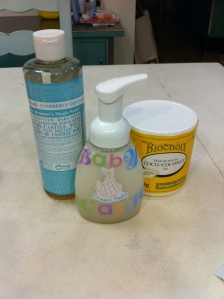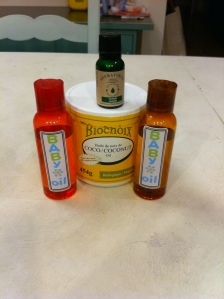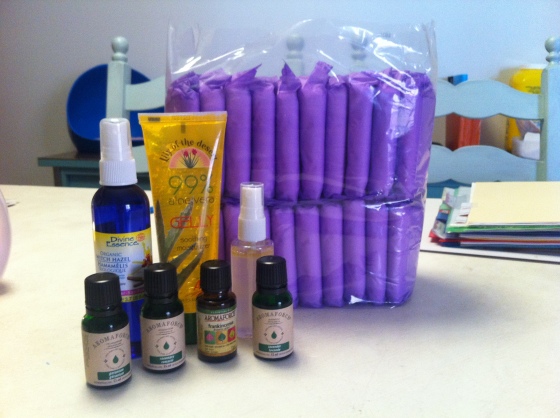 After giving birth and shedding 30 or so pounds I was really stoked to get back into my regular (non maternity) clothing again… except I forgot one thing – now that I’m nursing I can’t wear any of my tops and dresses that aren’t easy access to the all-you-can-drink milk buffet. (of course you can just lift your shirt up exposing your midriff… but I live in a cold climate so this wouldn’t work for me – especially with winter around the corner!)
After giving birth and shedding 30 or so pounds I was really stoked to get back into my regular (non maternity) clothing again… except I forgot one thing – now that I’m nursing I can’t wear any of my tops and dresses that aren’t easy access to the all-you-can-drink milk buffet. (of course you can just lift your shirt up exposing your midriff… but I live in a cold climate so this wouldn’t work for me – especially with winter around the corner!)
I’m hoping to nurse for a year so this essentially means that I need a new wardrobe. I’m not willing to break the bank to do this for numerous reasons 1) I won’t be nursing forever – these clothes are short-term investments. 2) A lot of nursing clothing is really ugly! (You’re only one nursing-T away from graduating to “mom jeans”!) 3) I don’t have oodles of money to spend on new clothes.
Fashion wise, I’m a vintage girl with a second-hand budget. Many of my favourite frocks were procured from the local frippery, Salvation Army, or my grandma’s closet. I love clothing with classic 1940s lines and styling, or modern brand names with second-hand price tags!
When it came to maternity clothing, I scoured the local thrift shops for inexpensive but unique and stylish tops and empire-cut dresses that could get me through pregnancy without breaking the budget.
For nursing, there are a few items (like nursing bras) that you can’t get around purchasing – but when I saw boring and often ugly nursing tops going for 45$ + at my local maternity/ nursing store… I vowed to try the same thrift-store approach to finding breastfeeding clothing.
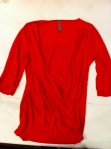
This top is still on the racks at the maternity store – selling for 39$. I got mine at the thrift store for 5$.
If your local second hand store has a maternity section head there first. Here you’ll often find nursing tops for a fraction of the price of the maternity store…and as people don’t nurse for very long, these tops are often in great shape and still in style. I scored two of the maternity store brand tops at my local thrift shop for 5$ each. One of the tops I got was so current it was actually still on the rack at the maternity store. I spent 10$ for two tops instead of 90$ (you can buy a lot of diapers for 90$!)
After scouring the maternity section of the thrift shop, I head to the regular tops section and look for shirts that can be converted into nursing clothing.
Any type of deep v-neck, button down, or wrap top could work for breastfeeding. I also got a couple shawl-style cardigans that I could use to throw over my shoulders for privacy when feeding in public. These tops set me back 5-7$ each.
The construction of most nursing tops from the maternity store consists of a v-neck top with a bib or cowl-neck panel that has either hidden holes or slits cut into it for easy breast access. Once I understood how nursing tops worked, I realized I could easily make my own.
Take an old tank-top, cut wider arm holes into it and then wear this under any button down, v-neck or wide neck shirt and PRESTO you have several new nursing shirts.
I also found a cowl-neck top at the thrift ship that I could cut hidden access slits into.
A third option is to buy a long/loose blouse in a sheer or light material, cut an access slit in the middle of the chest and cover this with a loose crop-style t-shirt.
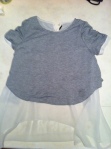
Ebay find for 15$
I did buy a couple new and inexpensive items for my nursing wardrobe: A black and a white nursing camisole/tank top with clip-down sides that I could wear with my existing blazers or cardigans. I also found a really funky top from Hong Kong (on ebay) that cost me 15$ shipping included. I get compliments on it all the time and like it so much I’ll wear it when I’m not nursing too. My biggest splurges were a 30$ nursing shirt on the liquidation rack at the maternity store, and a Calvin Klein deep V shirt that needed no alteration to work as a nursing top that I got at an outlet centre for 20$.
In all I built a nursing wardrobe of over 13 different tops, sweaters and camisoles that can be combined to make 30+ looks for under 130$ (or the price of 4 shirts from the maternity store)
With a keen eye, some patience, and some scissors, you too can build a stylish and inexpensive nursing mother wardrobe.

